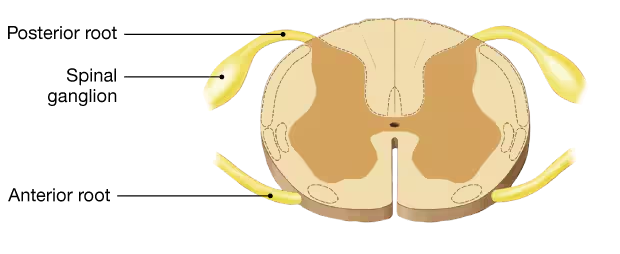 Back
Back Frederic H. Martini, Judi L. Nath, Edwin F. Bartholomew 12th Edition
Frederic H. Martini, Judi L. Nath, Edwin F. Bartholomew 12th Edition Ch. 15 Sensory Pathways and the Somatic Nervous System
Ch. 15 Sensory Pathways and the Somatic Nervous SystemProblem 1
The larger the receptive field, the
(a) Larger the stimulus needed to stimulate a sensory receptor
(b) Fewer sensory receptors there are
(c) Harder it is to locate the exact point of stimulation
(d) Larger the area of the somatosensory cortex in the brain that deals with the area
(e) Closer together the receptor cells
Problem 2
_______ receptors are normally inactive, but become active for a short time whenever there is a change in the modality that they monitor.
Problem 3
The CNS interprets information entirely on the basis of the
(a) Number of action potentials that it receives
(b) Kind of action potentials that it receives
(c) Line over which sensory information arrives
(d) Intensity of the sensory stimulus
(e) Number of sensory receptors that are stimulated
Problem 5
Identify and shade in the locations of all the ascending sensory tracts in the following diagram of the spinal cord.
Problem 6
Identify six types of tactile receptors located in the skin, and describe their sensitivities.
Problem 7
What three types of mechanoreceptors respond to stretching, compression, twisting, or other distortions of their plasma membrane?
Problem 8
What are the three major somatic sensory pathways and their functions?
Problem 9
Which three pairs of descending tracts make up the corticospinal pathway?
Problem 10
Which three motor tracts make up the medial pathway?
Problem 11
What are the two primary functional roles of the cerebellum?
Problem 12
The corticospinal tract
(a) Carries motor commands from the cerebral cortex to the spinal cord
(b) Carries sensory information from the spinal cord to the brain
(c) Starts in the spinal cord and ends in the brain
(d) Does all of these
Problem 13
What three steps are necessary for transduction to occur?
Problem 14
Differentiate between a tonic receptor and a phasic receptor.
Problem 16
Describe the relationship among first-order, second-order, and third-order neurons in a sensory pathway.
Problem 17
Damage to the posterior spinocerebellar tract on the left side of the spinal cord at the L1 level would interfere with the coordinated movement of which limb(s)?
Problem 18
What effect does injury to the primary motor cortex have on peripheral muscles?
Problem 20
Explain the phenomenon of referred pain in terms of labeled lines and organization of sensory tracts and pathways.
